I’ve been really hyped to run Game of Thrones with the FATE Core RPG. I’ve written thousands of words on emulating this dramatic saga!
So, of course, my awesome players … would rather play in Star Wars.
 I’ve run Star Wars for MANY years – off and on since the mid-90’s. Once the prequels made the story silly, I stopped.
I’ve run Star Wars for MANY years – off and on since the mid-90’s. Once the prequels made the story silly, I stopped.
I’ve played four editions of RPGs from two publishers, so I know what’s been done and can hopefully use my experience to craft my best version yet.
I think the key to this is to focus on storytelling of the original trilogy.
Character Creation
The Aspects that define Star Wars characters are categorized as Role, Conflict, Crisis, Debt and Favor. These are patterned after the main characters in A New Hope.
Role defines the character’s function in the story and serving as a snapshot of their portrayal. It follows the general framework: [Adjective], [Adjective] [Species and/or Job] from [Origin].
Luke Skywalker: Brash, Young Pilot from a Remote Desert World
Han Solo: Quick-on-the-Trigger, Cocky Core World Smuggler
Jar-Jar Binks: [not available for play]
![jarjar[1]](https://fertilemindscape.files.wordpress.com/2013/08/jarjar1.jpg?w=500)
USDA ground Gungan
Conflict replaces the Trouble Aspect in standard FATE games. Trouble represents personal struggles or problematic relationships. Conflict defines a character’s core duality or principle opposition. This Aspect follows the general forms of either contradiction “I am X, but I’m also Y” or confrontation “I am X, so I fight Y”.
Chewbacca: Honorable Warrior life-debted to a Mischievous Scoundrel?
Princess Leia: We fight for Freedom, Tyranny is the Real Crime
These are a personal struggle and a problematic relationship, but notice each defines a character by contrast. Dramatic contrast is what puts the war in Star Wars. Great stories would come from scenarios calling for one side of the Aspect at the expense of the other. Examples:
- Chewie must pose as slaver to rescue Han from the Corporate Sector Authority.
- Leia must ally with an Imperial Admiral Pelleaon to fight the Yuuzhan Vong.
Crisis, Debt, Favor are pretty close to the FATE Core Phase Trio in that it describes a shared background that links the characters.
The Owen & Beru Barbeque was Luke’s formative crisis, and in the course of the story he’s in Debted to Han for saving him and is gets Favored by Leia for rescuing her. Repaying him with a sisterly tongue kiss could be the source of a new Crisis.
![2010289_1316684920816.7res_468_359[1]](https://fertilemindscape.files.wordpress.com/2013/08/2010289_1316684920816-7res_468_3591.jpg?w=300&h=198)
Skills
Not a lot of changes to skills have I made. Its mostly just renaming some for a more Star Warsy feel and in homage to the old d6 version:
Buy (Resources), Con (Deceive), Contact, Fight, Interface*, Investigate, Know (Lore), Mechanic*, Move (Athletics), Perceive (Notice & Empathy), Persuade (Rapport), Pilot (Drive), Ride, Survive*, Shoot, Sneak (Stealth), Strength (Physique), Threaten (Provoke), Will. (* for new skills I’ll explain after the paragraph space)
Interface is for using computer software to help reach a goal. There wouldn’t be a story unless somebody sliced data files to decrypt the Imperial desktop folder “Death Star Weaknesses“.
How did Han know to shove Luke inside a dead Tauntaun? He Overcame with his Survive skill. This skill would cover field medicine too. Survive is useful wherever civilization ain’t.
Mechanic skill represents the ability to resolve issues with machinery; i.e. building prissy droids from scratch , fixing over-sized 1970’s sci-fi gadgets and constructing armor. Handy, cause some armor isn’t that effective.
Consequences
Characters in this galaxy endure a lot of hardship – especially if they’re protagonists. However, they’re not harder than other sci-fi stars. Chewbacca versus Jayne Cobb, fair fight.
Instead of taking an Extreme Consequence, characters in my game will have 3 Mild, 2 Moderate and a Severe Consequence slots. These make them no tougher than standard FATE PCs but dramatically deeper (Consequences = Complications = Player emotion = Drama).
Speaking of drama, Mental Stress is renamed Emotional Stress. <— THAT’S pic is EMOTIONAL.
Vehicles
Applying the FATE Fractal, anything can be a character, including vehicles. So, how are vehicle s characters?
A Rebel in an X-Wing can blow up a TIE fighter, but that same Rebel with a Blaster rifle would only stain its paint job. A Jedi on a speeder bike can cover a hundred kilometers in an hour, but on foot a dozen or so km in a day. Vehicles are Extras that showcase how awesome characters are and enable them to do things they normally couldn’t!
 The skills of their controlling character or characters are a vehicle’s skills. Yet, these machines have Aspects for unique details about the individual craft and Stunts for hardwired design features of their class; both can bolster character rolls.
The skills of their controlling character or characters are a vehicle’s skills. Yet, these machines have Aspects for unique details about the individual craft and Stunts for hardwired design features of their class; both can bolster character rolls.
- Boba Fett’s Firespray transport Slave 1 has the Aspect Linked Cannons Rain Blaster Torrents .
- A-Wing fighters have the Stunt Small and Quick that grants +2 to Pilot Defend action to avoid targeting locks and being tailed.
A consideration with vehicles is how much damage they can take before being rendered not useful to characters. All vehicles have a default 1 and a 2 Stress boxes, like PCs. Also, characters can sacrifice their own Stress in place of their vehicles Stress when on board.
They also get Consequences depending on their size and durability. These are general guidelines:
- Speeder bike has 1 Mild.
- Bigger Speeders and star fighters have 1 Mild and a 1 Moderate.
- Giant speeders/walkers and light star transports (Millenium Falcon) have 1 Mild, 1 Moderate and 1 Severe.
- Small capital ships would have extra Milds and/or Severes. Monolithic Super Star Destroyers might have 4 Milds, 3 Moderate, 2 Severe and 1 Extreme.
Characters can choose to take Consequences in place of the vehicle. Instead of the speeder taking Ruined Engine, it may be better for the engineer to take Frustrated because a Ruined Engine would be MORE frustrating.
 Roll Mechanic to Overcome Busted Mini-Van Aspect
Roll Mechanic to Overcome Busted Mini-Van Aspect
The Force
The Force as an ally can greatly enhance a PC’s capabilities. If a character’s Role Aspect describes Force sensitivity, you know something like “I’m an Eff’in Jedi!“, then they have Permission to take Use the Force Stunt:
 Once per Scene, the character can Create the Advantage Using the Force on their character with a free Invoke without rolling; although Will would be used to “re-create” the Advantage. The Invoke can be used to allow Will to make ranged Strength actions (telekinesis).
Once per Scene, the character can Create the Advantage Using the Force on their character with a free Invoke without rolling; although Will would be used to “re-create” the Advantage. The Invoke can be used to allow Will to make ranged Strength actions (telekinesis).
A long list of individual Force powers, need we do not. Every special ability we see in the saga can be emulated by a mix of Use the Force and individual Role Aspect Invocations. Stunts can be a mechanically “cheaper” way to use powers the character uses regularly.
Take getting a vision of the future for example. A player could:
- Invoke Using the Force or any Force-related Aspect to declare that they have a vision, then roll Perceive to Create an Advantage based on it.
- Use their Farseeing Stunt: Once per session, the player can ask the Gamemaster about the future and she must answer with a visual description of a scene that answers the question. Players don’t spend 2 refresh for ambiguous images! This revelation can become a Story Aspect.
This modeling of the Force is based off ideas by Ryan Danks. His write-up has plenty of great examples FATE Force Fun.
 The Darkside is always a threat to Force users. I’ve seen how several other RPGs handle the seduction, and I think I’ve figured a good method.
The Darkside is always a threat to Force users. I’ve seen how several other RPGs handle the seduction, and I think I’ve figured a good method.
A Force using character that is played like a good guy, won’t go to the Darkside. A character that does Sith shit should rename their Aspects to reflect this. To redeem, start doing really good stuff on par with the evil you did.
A PC can start on the Darkside if its cool with the group. If their Role Aspect describes evil and Force use, they’re on the Darkside.
And … that’s it. There’s no need for a seduction mechanic. Playing a Super-Powered Sci-Fi Asshole Ronin can be way more fun than a celibate stoic space paladin – that’s the REAL seduction!
OK, I’m done – WAIT!
Lightsabers are Weapon:4 and very rare.
The Stunt A Jedi’s Weapon lets a character with a Jedi or Sith Role Aspect use Fight to Defend against Shoot attacks. If the Defend succeeds with style, they can deal 2 Stress to another character instead of getting a Boost if the weapon was a blaster. Bullets deflected will just stain your robes with ashes.
Now, done we are. This is untested and any input would help make our game better. I’d do it for you. 😀
Comment here or on the G+ FATE Community.
![LRNCe[1]](https://fertilemindscape.files.wordpress.com/2013/08/lrnce1.jpg?w=300&h=192)


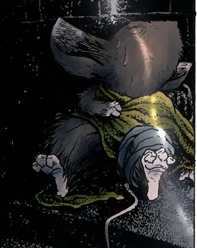
![Mouse_Guard_5_cover[1]](https://fertilemindscape.files.wordpress.com/2013/07/mouse_guard_5_cover1.jpg?w=300&h=274)
![art[1]](https://fertilemindscape.files.wordpress.com/2013/07/art1.jpg?w=500)


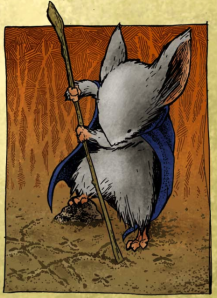

![08_mices5_full[1]](https://fertilemindscape.files.wordpress.com/2013/07/08_mices5_full1.jpg?w=182&h=300)

![Lieam[1]](https://fertilemindscape.files.wordpress.com/2013/07/lieam1.jpg?w=147&h=300)



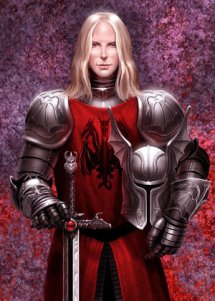
![tumblr_m85vazBOlC1qlll6ko1_500[1]](https://fertilemindscape.files.wordpress.com/2013/07/tumblr_m85vazbolc1qlll6ko1_5001.jpg?w=300&h=229)


![20110810_thrones-7-pycelle[1]](https://fertilemindscape.files.wordpress.com/2013/07/20110810_thrones-7-pycelle1.jpg?w=300&h=200)








![vlcsnap-2013-04-08-13h21m23s76[1]](https://fertilemindscape.files.wordpress.com/2013/07/vlcsnap-2013-04-08-13h21m23s761.png?w=300&h=168)
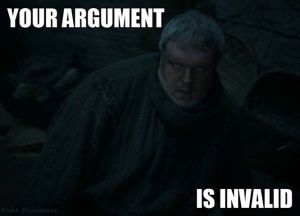
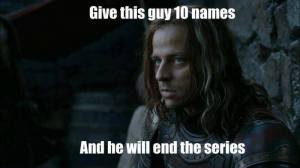




![funny-nun-pics-8[1]](https://fertilemindscape.files.wordpress.com/2013/07/funny-nun-pics-81.jpg?w=300&h=244)
